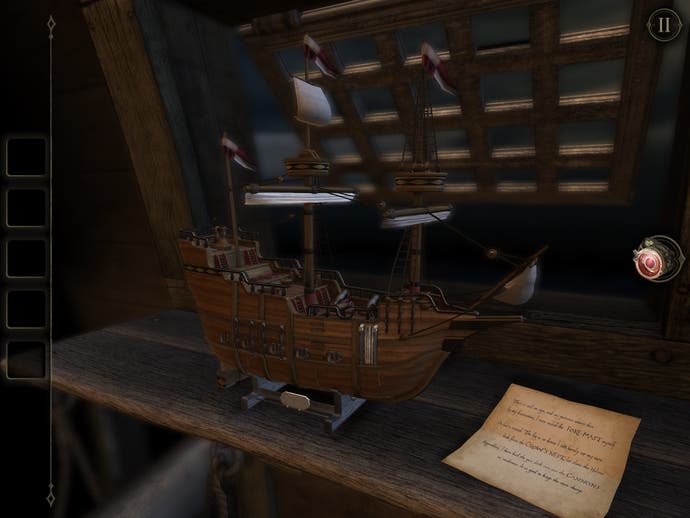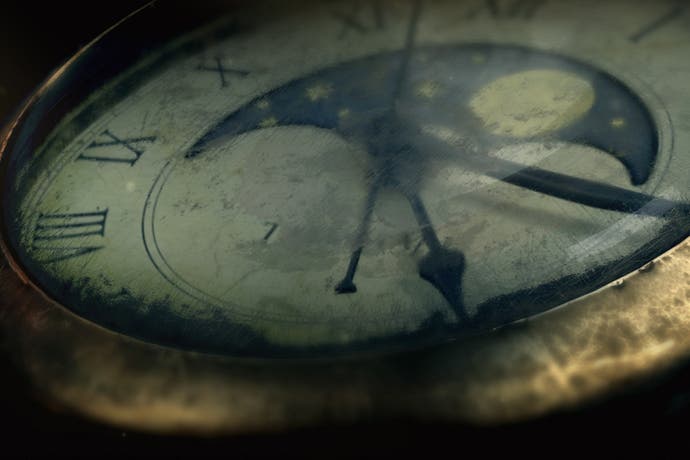The Room 2 review
Location, location, location.
It starts, of course, with a room and a box. This sequel to Fireproof Games' Bafta-winning puzzler is nothing if not familiar. Yet it's also often unexpected in the ways it expands the potential of the original, unfolding and unpacking its concepts with much the same confidence as the slides, drawers and moving panels that form its brain-teasing core.
It's a tactile sort of game, one very much in love with the deep, resonant mystery of objects. What's inside? What does it do? You'll twist, prod, slide and drag a giddy assortment of screws, drawers, wooden panels and brass plates as you inch your way towards some measure of understanding. That much, at least, remains unchanged from the first game. If you were beguiled by its quietly eerie contemplative mood, you'll find the same pleasures repeated here.
Where The Room 2 differs is in its scale. Previously, you were faced with a single table or plinth, and a single box which became a rabbit hole of connected puzzles. Not any more. Now the game lives up to its title more fully, offering larger locations with multiple interactive areas and puzzles that are intertwined between them. The first post-tutorial level finds you in the bowels of a ship, moving between a strange locked chest and a complex mechanical model galleon as you work towards a solution.

This has a freeing effect on the game design, nudging it closer to a point-and-click adventure than a pure puzzle game. Rather than progress meaning opening a new drawer, it can now mean the introduction of a whole new array of objects and boxes with which to tinker, and your goals expand in kind. This is a game where you'll repair and fire a crossbow in an ancient crypt, triggering the sort of mechanisms usually found in an Indiana Jones adventure, or guide beams of light around a laboratory.
What the game loses is its sense of intimacy. There are still micro-scale problems to be solved, where the breakthrough comes from spotting some tiny shape that doesn't quite fit with its surroundings, but with your attention now divided between two, three or even four separate workstations you no longer get quite the same obsessive undertow - that feeling of being drawn into one single object, fixated on its details, poring over every surface until the solution materialises. You're now a multitasker, whether you like it or not.
It's not just a world you can feel, but one you can almost smell - faded varnish, scuffed velvet and dust undisturbed for decades

That's not such a bad trade-off though, when you consider how it enables puzzles that would have been impossible previously. Every sequel must grow in order to justify its existence, and Fireproof has broadened its canvas without losing sight of the brush strokes.
What hasn't diminished is the atmosphere. This is still a gorgeous-looking game, and a tribute to the unsung heroes of game design: the texture artists. For a game where you need to "feel" the wood grain and worn brass in your fingers, the superb graphical work here fills in the sensory gap erected by the touchscreen. It's not just a world you can feel, but one you can almost smell - faded varnish, scuffed velvet and dust undisturbed for decades.
Make no mistake, this is a scary game. Where The Room was creepy and occasionally unsettling, The Room 2 turns into a flat-out horror story. The music, seemingly composed exclusively for haunted Victorian nurseries, is as effective as ever but now you're faced with scenarios that pull the spine-chilling subtext out into the sickly light. One chapter of the game is based around an automated turn-of-the-century séance room, full of spirit cabinets and automatic writing, and it freaked me out more than any other game this year. Another takes you to a sinister laboratory, pitched somewhere between the scientific reality of Galvani and the gothic fantasy of Mary Shelley.
The Lovecraftian undercurrent of terrible cosmic doors flung open by man's curiosity, so effectively teased out in the original, is also much further to the forefront now. Indeed, while you'll follow the puzzles just fine, if you haven't played the first game you may find the events that follow a little too obtuse. If you have, you'll be well satisfied with the way it builds on that game's cliffhanger.

It's still not a particularly long game, though. It'll take an afternoon rather than the hour and change of the previous game, but Fireproof is sticking with Barnum's edict to always leave them wanting more. That's a wise decision - The Room's dense, claustrophobic approach to puzzling is at its most effective when consumed in overwhelming and intense short doses. Yes, you can tinker with its puzzles at the bus stop, but it works best with headphones, curled up in the dark.
What does limit it slightly - just by the nature of the game - is how linear it is. Each solution must inevitably dovetail with the next puzzle, a procession of objects and uses that can allow large chunks of the game to slip past without too much effort, once you find its rhythm. Replayability and freedom to roam are hardly the goal of a game like this though, so while your progress through the game sometimes feels slicker than you'd like, that's really a testament to how much you're enjoying your time in its ominous world, and how you resent anything that hastens the end of the experience.
Crafting a sequel to a bite-sized surprise hit is never easy. What was once fresh and exciting becomes expected, and the recipe can be so delicate that trying to repeat it with different ingredients can easily result in an indigestible disaster. Fireproof has taken a conservative approach that avoids those pitfalls, but it hasn't abandoned ambition in the process. I doubt the structural integrity of The Room would survive another extension, but this is still a perfect game for a cold winter's night.

